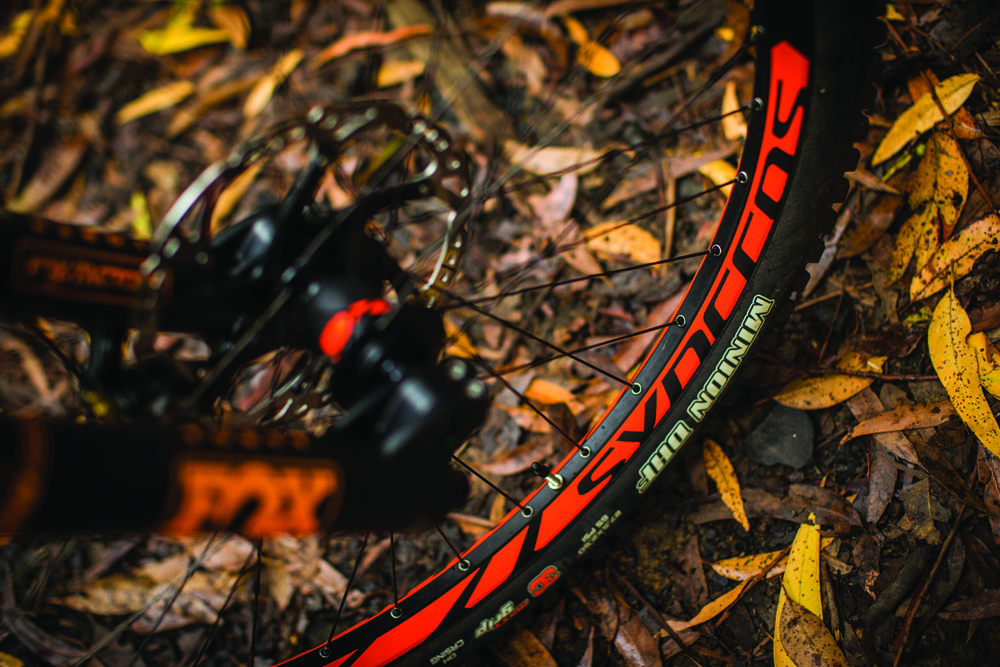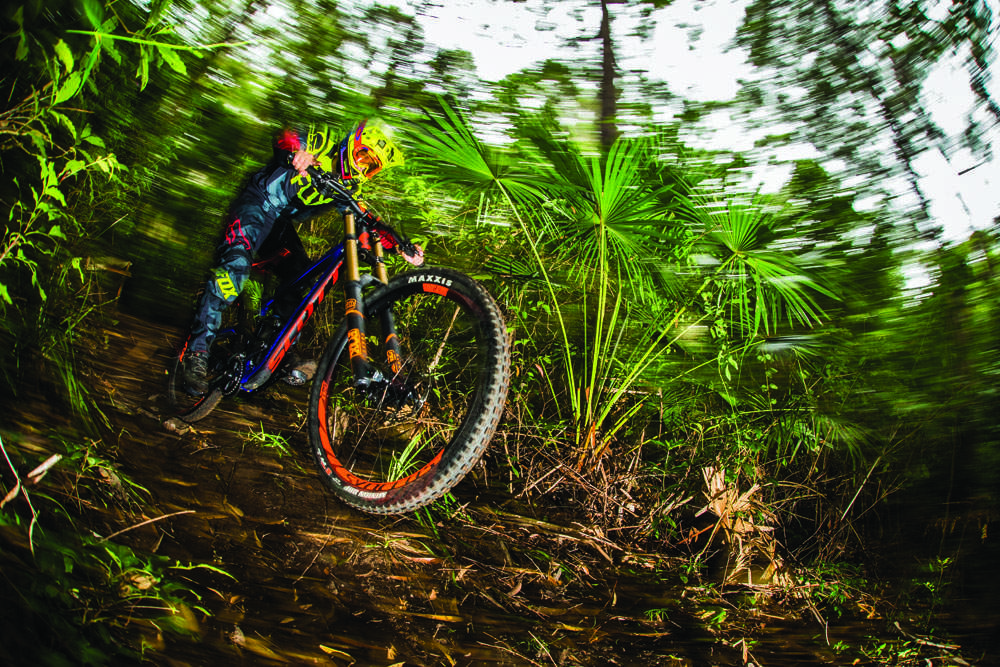By the end of this review, it’ll be clear to you that the 2016 Scott Gambler is indeed a mighty fine downhill machine. This bike’s performance is no ‘fluke’ though. Its DNA stems from nearly 60 years of market leading design, development and technology. The birth of Scott started way back in 1958 when a talented engineer and ski racer by the name of Ed Scott decided that bamboo and steel ski poles just weren’t cutting it and invented the world’s first tapered aluminium ski pole. Now I know this has nothing to do with a downhill bike in 2016 but that first vision of technical innovation would push the brand into not only branching out in new markets but also leading the way in many others. I won’t go through each individual triumph but Scott as a brand is very impressive and has great depth in the cycling world.
Now, going off what I’ve mentioned above, it is clear that Scott have an amazing R&D team, but if I’m totally honest with you I really am not too sure if they have the right guy in charge of naming their bikes? Calling this bike the ‘Gambler’ doesn’t make sense. Perhaps something like, ‘winner’ or ‘podium eater’ would be more appropriate? This right here is one very fast, very fun DH machine, and let me now go into some detail about how I’ve come to reach that opinion…
Over the 2 months that I’ve been lucky enough to test the Gambler 710, I have been doing my best to put the bike through its paces not only on my local tracks, but I also managed to get down to Thredbo on two occasions including the National race where I tried my best to keep up with some of the fastest riders in Australia. While the bike performs well on the local stuff, it thrives on a track like Thredbo. The bike has an amazing ability to inspire confidence through the high-speed rough stuff. It is unbelievably stiff and dead silent, and you can just get off the brakes, get your weight back and let the bike do the rest.
I rode the Gambler on the standard settings first which, with the help of riders like Brendan Fairclough, I think Scott have managed to get the geometry pretty spot on. However during the test, the Gstaad- Scott team released an article on the different setups Neko and Brendan prefer to run on their race bikes. I found Neko will generally run the bike in the longer wheelbase setting so I decided I would change it up.
I really noticed the difference, the shorter setting felt more active and maybe a little more fun but the long setting I felt a lot safer at high speed. Scott have done an amazing job in designing a bike that is so adjustable that you can tailor make it to suit almost any downhill track. These adjustments come in the form of the wheel base length via the second axle location as mentioned above, BB height using a chip on the bottom shock bolt and the pretty standard head angle via the headset.
The Gambler 710 is practically the exact bike the Gstaad-Scott DH team are running, with the tough, never miss a beat Shimano saint groupset (apart from the zee shifter which to be honest I never really noticed until its first bath), the amazing fox suspension and Syncros components including the wheels which held up amazingly and have a nice wide rim preventing tire roll. There were a few stand outs for me however. Firstly, the new Fox Float X2 is amazing, because it is an air shock with high and low speed adjustments, you can get the shock performing exactly how you want (too stiff drop some air out, not changing springs etc.). I’d normally prefer a coil shock, especially on a track like Thredbo, but the Float X2 loved it.
Secondly, it is really impressive to see a bike come stock with Maxxis 3c rubber. They managed to transform a washed up racer from a complete goon to a cornering god.

It is really hard to find a negative but if I’m picky, the bike has always seemed a little cumbersome, especially around that linkage but the system works great. The floating link allows the shock to work to the best of its ability. At Thredbo, I watched rider after rider playing around with shock settings as they felt their rear end was jumping around a lot. The Gambler felt planted the whole time.
Now the weight of the bike is 16.5kg, which is pretty respectable indeed, especially considering it has been spec’d with such a bomb proof catalogue of parts. There’s even a few items that could be easily swapped out which would drop the Gambler 710’s weight even more. The Gambler 710’s retail price sits very competitively alongside the most popular DH bike on the market, and in my opinion, its ride quality and its unique features actually sets the Gambler ahead of those other options.


